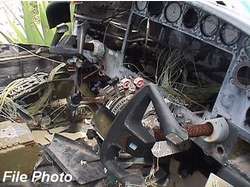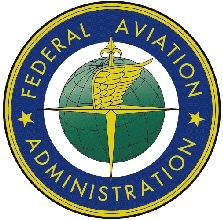 The AOPA warns us that aircraft owners
whose paperwork is not in order could face action as a result of a
stepped-up review of the FAA aircraft registry. The FAA will begin
flagging records that don't meet registration requirements. The
agency gave formal notice late last week that it will start listing
status of aircraft with registry discrepancies as "In Question" in
"the interest of national security."
The AOPA warns us that aircraft owners
whose paperwork is not in order could face action as a result of a
stepped-up review of the FAA aircraft registry. The FAA will begin
flagging records that don't meet registration requirements. The
agency gave formal notice late last week that it will start listing
status of aircraft with registry discrepancies as "In Question" in
"the interest of national security."
Old program; but now info's going to the snoops.
"This is not a new regulation," said AOPA Vice President of
Regulatory Affairs Melissa Bailey. "Aircraft owners have always
been required to notify FAA when the status of the aircraft
changes, and aircraft buyers must send FAA evidence of ownership
and a registration application before operating the aircraft.
 "AOPA's concern is that
aircraft owners not be branded potential terrorists due to a
clerical error or other innocent mistake."
"AOPA's concern is that
aircraft owners not be branded potential terrorists due to a
clerical error or other innocent mistake."
An aircraft's registration may be called into question if the
FAA learns from the last registered owner that the aircraft has
been sold but paperwork to register the aircraft has not been
received. Notification might include an endorsed certificate of
registration, an original or copy of a bill of sale, or a letter to
the FAA from the previous owner showing the aircraft had been
sold.
FAR 47 states that an aircraft's registration becomes
ineffective for operation when the aircraft changes hands. The new
owner must file evidence of ownership, such as a bill of sale, and
an application, and receive a temporary or new registration
certificate in order to keep operating.
A check by AOPA found some 18,000 aircraft that could fall into
the new "In Question" category.
Might as well start the paperwork now...
 The first step to correcting
registration problems is to actually check an aircraft's current
registration. AOPA members may check AOPA's online database. Others
may use the FAA's online registry. AOPA Title and Escrow Service
(ATES) offers a number of services that can help rectify
registration problems.
The first step to correcting
registration problems is to actually check an aircraft's current
registration. AOPA members may check AOPA's online database. Others
may use the FAA's online registry. AOPA Title and Escrow Service
(ATES) offers a number of services that can help rectify
registration problems.
First, if the registration is correct but the owner can't find
the certificate itself, ATES can quickly (24-48 hours) fax a
temporary certificate to allow the aircraft to keep operating and
follow up with a duplicate certificate in two-three business
days.
If the aircraft is not properly registered, ATES offers a couple
of options. Owners may request a title search to determine an
aircraft's current registration status and the steps that need to
be taken to properly register it. If the owner has recently (within
90 days) had ATES conduct a title search, then the owner can
request a document review. ATES will review what the FAA has on
file and determine the status of the registration.
 If problems remain with the
registration, owners may request Title and Escrow's title clearance
service, in which ATES staff will track down previous owners,
obtain the necessary paperwork, and file it with the FAA. If the
owner prefers to do the legwork himself, ATES offers a document
submission service to ensure that documents are in order, filled
out correctly, and filed in a timely manner.
If problems remain with the
registration, owners may request Title and Escrow's title clearance
service, in which ATES staff will track down previous owners,
obtain the necessary paperwork, and file it with the FAA. If the
owner prefers to do the legwork himself, ATES offers a document
submission service to ensure that documents are in order, filled
out correctly, and filed in a timely manner.
The FAA says that, from that agency's perspective, the "In
Question" listing is "informational only." It is intended as a flag
to regional FAA representatives about aircraft that need to be
checked, not a legal determination of an aircraft's registration
status. But owners need to be aware that correctly registering an
aircraft that had been improperly registered, whether deliberately
or by accident, may make them liable for back state taxes. And you
may not be able to board that next flight out of town.
 Aero-News: Quote of the Day (12.18.25)
Aero-News: Quote of the Day (12.18.25) Classic Aero-TV: Viking Twin Otter 400--Bringing the DHC-6 Back Into Production
Classic Aero-TV: Viking Twin Otter 400--Bringing the DHC-6 Back Into Production NTSB Final Report: Rans Employee Flying Club Rans S-6ES Coyote II
NTSB Final Report: Rans Employee Flying Club Rans S-6ES Coyote II ANN FAQ: Submit a News Story!
ANN FAQ: Submit a News Story! ANN's Daily Aero-Term (12.18.25): Braking Action Advisories
ANN's Daily Aero-Term (12.18.25): Braking Action Advisories






